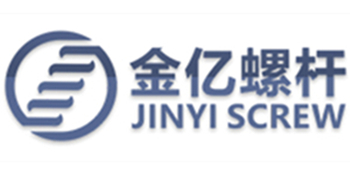
Privacy statement: Your privacy is very important to Us. Our company promises not to disclose your personal information to any external company with out your explicit permission.

Barrel Electroplating: An Overview
Barrel electroplating is a method designed for the efficient electroplating of numerous small parts within a rotating container. This technique is widely utilized for various metal coatings, including galvanizing steel components, copper plating, nickel plating for copper and its alloys, and tin or chromium coatings.
1. Introduction to Barrel Plating
Barrel plating is particularly suitable for small parts that are difficult to plate due to their size or shape. This method offers significant labor savings compared to traditional rack or basket plating techniques, enhancing production efficiency while also improving the surface quality of the plated items. The industrial application of barrel plating dates back to the 1920s, with its introduction in domestic markets occurring in Shanghai during the mid-1950s. By the 1960s, mechanized barrel plating equipment began to emerge, transitioning from manual to more automated systems by the late 20th century. Today, barrel plating accounts for approximately 50% of the electroplating industry, covering a diverse range of coatings including zinc, copper, nickel, tin, chromium, gold, silver, and various alloys.
2. Understanding Barrel Plating
Barrel plating, also referred to as roller plating, involves placing a collection of small parts into a specialized roller. As the roller rotates, metal or alloy coatings are deposited onto the surfaces of these parts. The typical process involves loading pre-treated parts into the drum, where they are pressed against a cathodic conductive device. The drum rotates, causing the parts to tumble and ensuring that every piece is uniformly plated. Fresh plating solution is continuously introduced while gases generated during the process are expelled through small holes in the drum.
3. Key Characteristics of Barrel Plating
Continuous Tumbling: Parts in the drum are not stationary; they continuously roll and shift positions. This tumbling action is crucial for achieving uniform plating across all components. Parts that start near the surface eventually move inward, allowing for even exposure to the plating solution.
Uniform Coating: The tumbling motion ensures that all parts, regardless of their initial position, receive equal exposure to the plating solution, preventing uneven coating or defects such as "burning" that can occur if parts remain stationary.
Indirect Current Transmission: Unlike rack plating, where current is directly transmitted to each part, barrel plating relies on indirect conductivity. The parts contact the cathode through their own weight, which can lead to increased contact resistance and variability in current distribution.
4. Types of Barrel Plating
Barrel plating can be categorized based on the shape and orientation of the drum:
Horizontal Barrel Plating: This method uses a horizontally oriented drum, often hexagonal or cylindrical in shape. It allows for efficient mixing and high throughput, making it ideal for a wide range of small parts across various industries.
Inclined Barrel Plating: The drum is positioned at an angle, typically between 40° and 45°. This design facilitates easier loading and unloading of parts, though it generally has lower productivity compared to horizontal systems.
Vibratory Plating: A newer technique developed in the late 20th century, vibratory plating employs a vibrating screen structure that enhances mixing and uniformity in plating. This method is particularly effective for delicate or high-precision components.
5. Considerations for Barrel Plating
While barrel plating offers numerous advantages, certain challenges must be addressed:
Current Density Management: Variability in current density can lead to uneven coating thickness. Careful monitoring and adjustments are necessary to maintain optimal conditions.
Chemical Composition Maintenance: The main salts in the plating solution can deplete quickly, necessitating regular analysis and adjustments to ensure consistent plating quality.
Pre-treatment Limitations: Due to the nature of barrel plating, pre-treating parts can be challenging, which may lead to contamination of the plating solution.
pH Control: Maintaining the pH level is critical, particularly in nickel plating, where hydrogen evolution can significantly affect the process.
6. Conclusion
Barrel plating encompasses various techniques, each with distinct characteristics suited to different applications. By selecting the appropriate method based on part specifications and production requirements, manufacturers can optimize efficiency and enhance product quality. Horizontal barrel plating is generally preferred for standard small parts, while vibratory plating may be more suitable for delicate components. Understanding the strengths and limitations of each method is essential for achieving successful electroplating outcomes.
December 25, 2024
December 12, 2024
May 02, 2024
이 업체에게 이메일로 보내기
December 25, 2024
December 12, 2024
May 02, 2024
November 05, 2024

Privacy statement: Your privacy is very important to Us. Our company promises not to disclose your personal information to any external company with out your explicit permission.

Fill in more information so that we can get in touch with you faster
Privacy statement: Your privacy is very important to Us. Our company promises not to disclose your personal information to any external company with out your explicit permission.